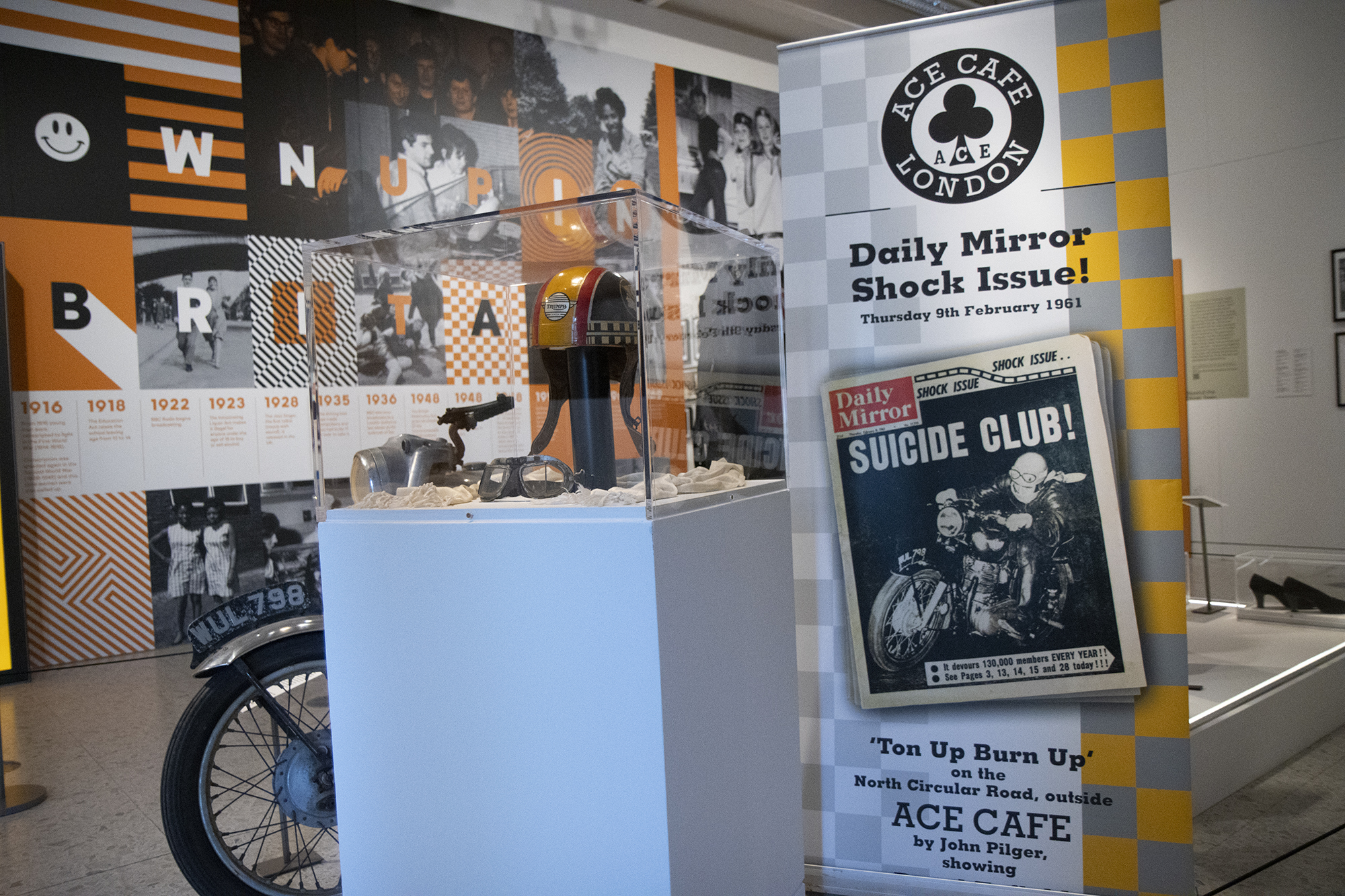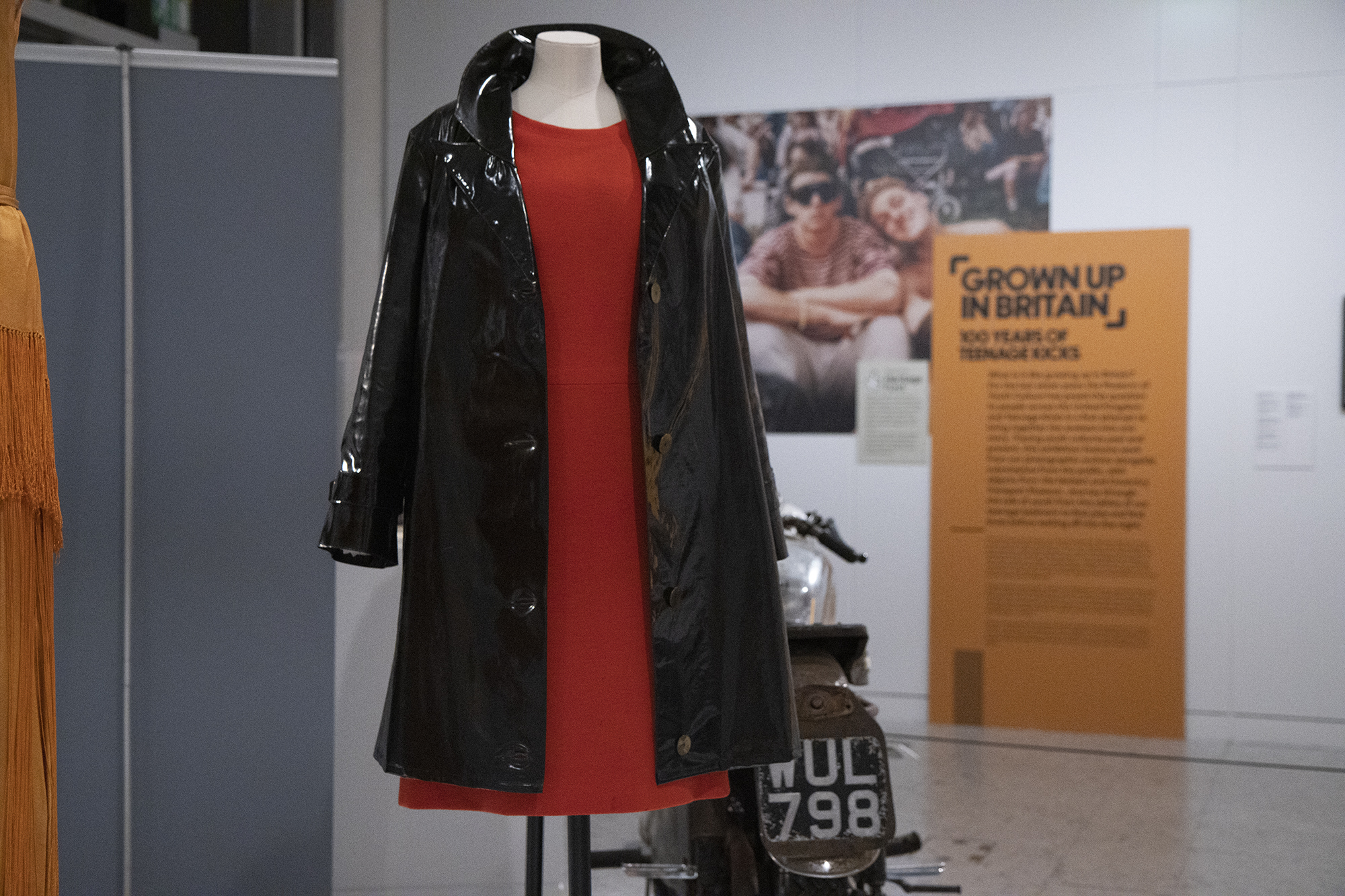Grown Up in the 1960s – Mods and Rockers
20 September 2022
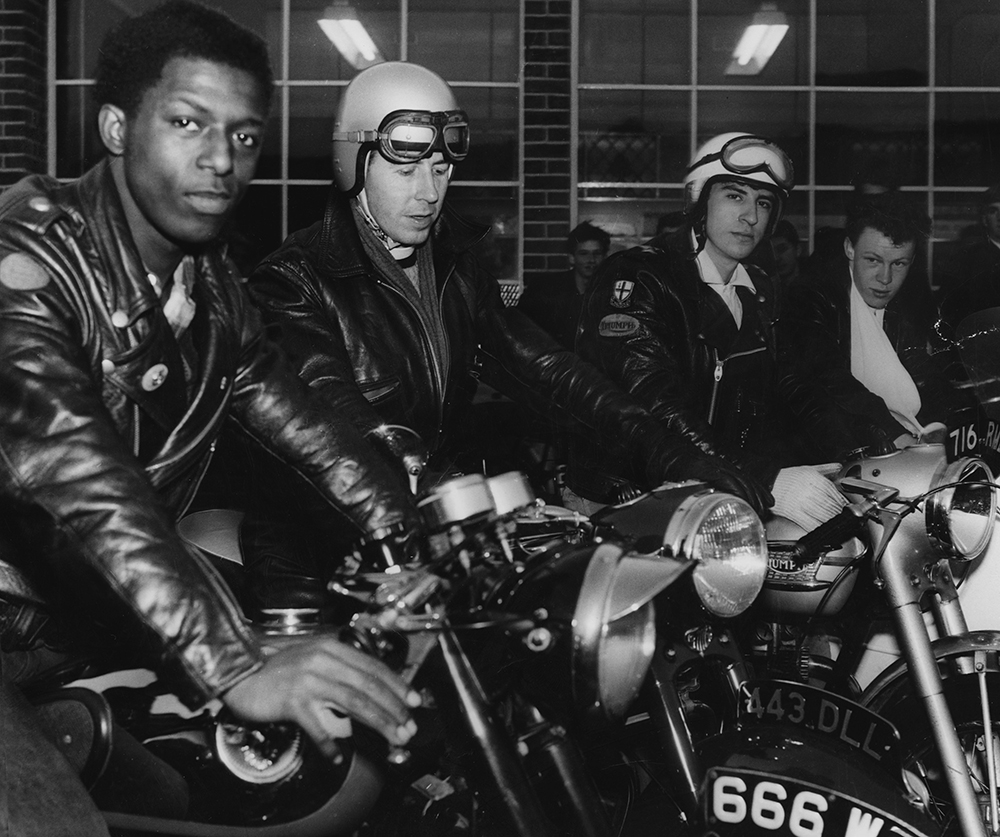
Image: 59 Club / Museum of Youth Culture
Find out how clashing youth subcultures gave rise to moral panic during the 1960s
Alongside our Grown Up in Britain exhibition with the Museum of Youth Culture, we've been looking back at how young people in the UK have shaped their identities around music, fashion and more over the years. Following the explosion of teenage culture after the Second World War, the 1960s witnessed the first famous culture clash amongst young people, as a rivalry emerged between Rockers, whose musical interests and identity represented more of a continuation the teen culture of the 1950s, and the more fashion-conscious, “Modernist” Mods.
During this decade, clothing, music and even your choice of ride became bound up together, badges of identity that were prized by a generation of youths with more purchasing power and consumer choice than any before, thanks to a booming post-war economy.
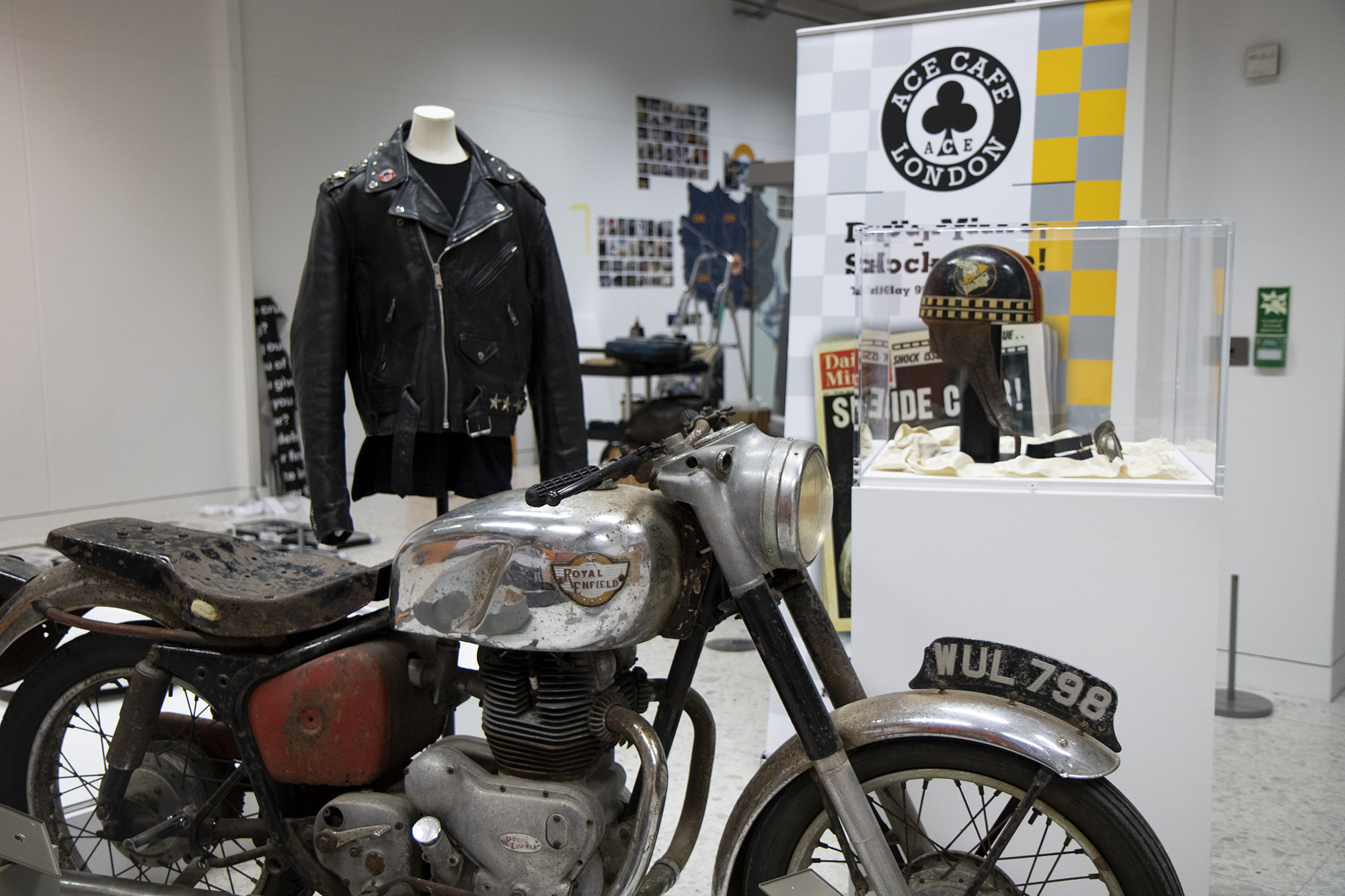
At the centre of the Rocker subculture was the motorcycle – a symbol of danger, rebelliousness and machismo reflecting the Rocker attitude and outlook. As mass production of motor vehicles stepped up, Rockers were able to purchase relatively cheap, factory-line cycles which they would often modify to look more like racing bikes.
Biking dictated their fashion choices a large extent: Rockers typically dressed in protective leathers, t-shirts, jeans and heavy boots, often customising their jackets with studs, badges, patches and painted designs. Styled hair was also a must, with the Brylcreemed pompadours popularised in the 1950s living on in this new subculture. Their sense of style and identity was also influenced by film stars like Marlon Brando and Steve McQueen, while their music idols included Elvis Presley, Jerry Lee Lewis and Gene Vincent.
Sidney J. Furie’s 1964 film The Leather Boys offers a close look at the culture and some of its most famous London haunts, including the Tidal Basin Tavern and Ace Café (the latter gets a mention in our Grown Up in Britain exhibition).
Mods, meanwhile, cultivated a less macho appearance, with fitted suits, bright colours and bold patterns – a look that tended to be perceived by Rockers as effeminate. In contrast to Rockers’ careful styling, Mod men increasingly opted for Beatles-style bowl cuts or mop tops, while their vehicle of choice was the scooter, ideally a Vespa or Lambretta. Casual polo shirts, turtle necks and tab-collars were also popular, while women tended to wear miniskirts, shift dresses and go-go boots, with hair piled high into a beehive.
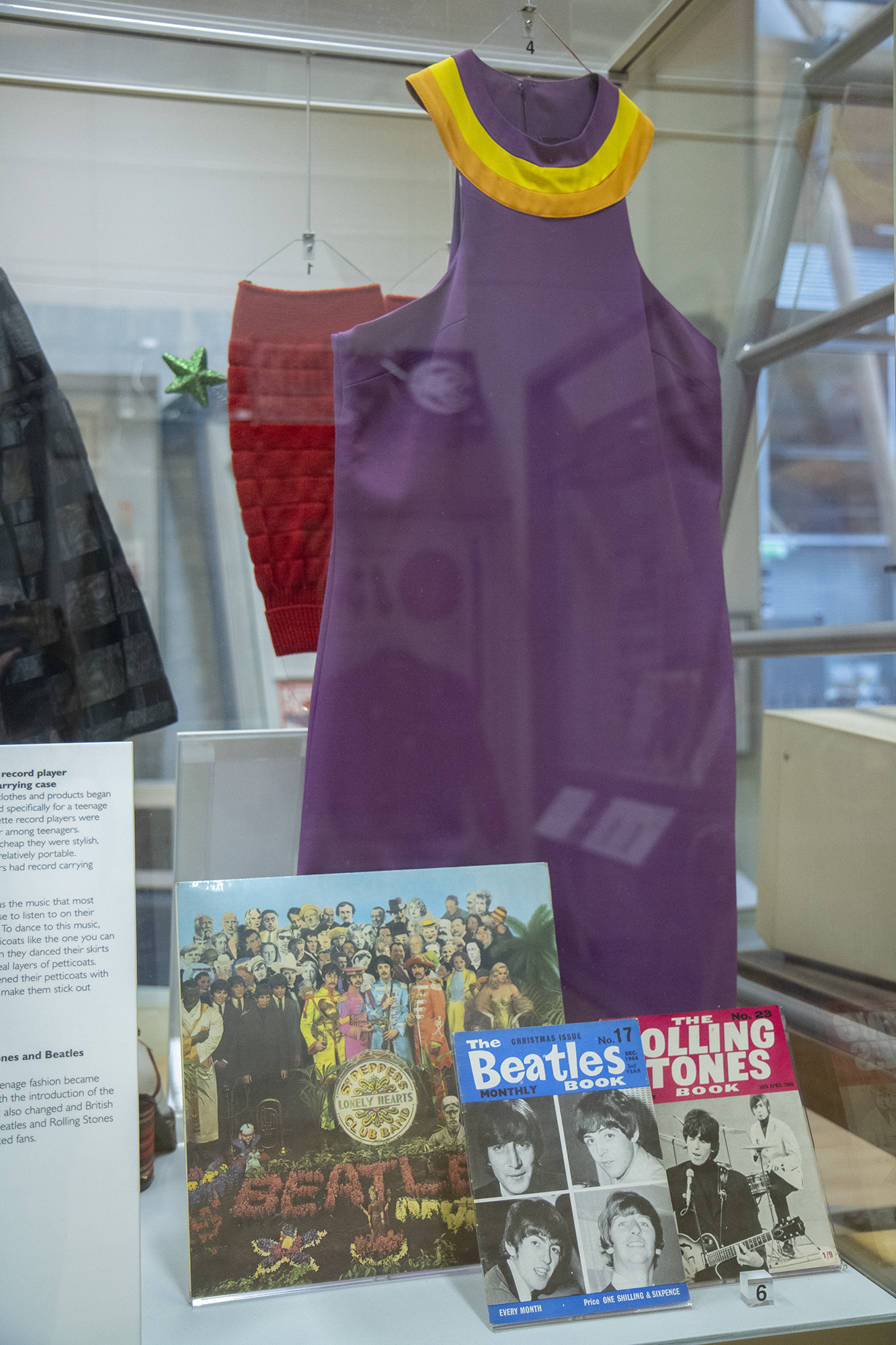
Initially associated with 1950s Beatnik culture, Mods often met in coffee bars, which stayed open much later than pubs at the time, and usually had jukeboxes – some even reserving space for customers to bring their own records.
The term “Mod” actually emerged in the 1950s, an abbreviation of “Modernists” in reference to their interest in modern jazz, but by the 1960s, Mods were also listening to soul, ska and rhythm and blues. By the middle of the decade, the culture had also become associated with rising British rock groups like The Who, Small Faces and The Kinks, and musical boundaries were blurring.
The Beatles, for example, who were heavily influenced by rock and roll stars like Little Richard, experimented with a range of different sounds, whether covering soul and Motown classics, capturing Kinks-style kitchen sink vignettes, or straying into psychedelia. Likewise, contemporary soul and rhythm and blues artists often covered The Beatles’ hits. But even before that, song swapping between soul, blues and rock and roll acts wasn’t unusual, and genre boundaries were rarely clear cut.
While skirmishes between the two groups did take place (as would later be reflected in The Who’s Quadrophenia), and could sometimes result in violence, the extent of the animosity has perhaps been somewhat overstated thanks to moral panic whipped up by sensationalist media coverage.
Rockers certainly enjoyed their rough reputation – their image was designed at least to shock if not intimidate. Yet one of the most famous names associated with the movement in the UK was actually born out of a Church of England youth club in Hackney.
Affectionately known to local lads as “The Vic’s Caff”, the 59 Club was set up by the Reverend John Oates of St Mary of Eton Church, to provide a place where underprivileged young people from the church’s deprived neighbourhood could come together and enjoy music and company. The club’s great innovation was in allowing local youngsters to join whether or not they attended church. Added to that, the vicar was also able to persuade a young Cliff Richard to perform for its opening night on 2 April 1959 – a major coup that made the 59 Club an instant success, eventually resulting in the badge being adopted by Rockers across the country. You can see 59 Club images and objects on display in Grown Up in Britain.
After peaking around the middle of the decade, tensions between Mods and Rockers steadily subsided as youth culture continued to evolve. Mod culture grew in dominance as it came to represent all that was modern and new, and its aesthetic was increasingly commercialised, actively marketed to teenagers in the US as well as the UK. At the same time, Mods were breaking into different groups, with the working class, skinhead offshoot distancing themselves from a culture that was becoming increasingly Bohemian, associated with psychedelia and pop art and bleeding into what would become Hippie culture.
Grown Up in Britain is free to visit until 12 February 2022. Have a listen to our 1960s playlists below to hear how music changed across the decade.
